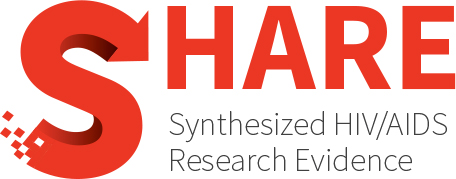Evaluating HIV drug resistance in the Middle East and North Africa and its associated factors: A systematic review
Abstract
OBJECTIVE: One of the obstacles to achieving successful treatment of HIV infections is the development and spread of mutations linked to resistance. Thus, it is important to monitor the prevalence and occurrence of drug resistance in HIV consistently. This study aimed to investigate how drug resistance affects the effectiveness of ART. METHODS: This systematic review focused on surveying ART resistance in both treatment-naA_ve and treatment-experienced PWH from 2004 to 2024. RESULTS: Out of 101 potential publications, 41 studies were included in this review. ART-experienced PWH in MENA countries commonly receive a regimen consisting of two NRTI drugs in combination with one NNRTI drug. The most frequent mutations were found in NRTIs (M184V, D67N, V75M, M41L, and T69N), NNRTIs (K103N, K101E, V106A, and G190S), and PIs (M36I and H69K). The ART-experienced groups in Israel and Iran presented the highest rates of resistance, reaching 52.78% and 43.03%, respectively, whereas the ART-naA_ve group in Turkey presented a resistance rate of 53.57%. The most prevalent HIV-1 subtypes in the region were B, CRF35-AD, CRF01-AE, A1, CR02-AG, C, and D. A high frequency of drug resistance mutations, such as M184V and K103N/S, was observed in the CRF35-AD, A, and C subtypes. CONCLUSION: This is the first report to provide deep insight into ART resistance patterns in the MENA region among both ART-naA_ve and ART-experienced PWH. The results revealed a significant occurrence of drug resistance to RTIs, PIs, and INSTIs among both groups. This finding highlights the importance of prescribing the INTIs in native and PWH with resistance to RTIs and/or PIs to increase the chance of response to ART as well as regular monitoring of resistance to ART in MENA countries. This also involves identifying the key factors contributing to drug resistance, including inadequate adherence to ART and a lack of adequate monitoring systems to prevent treatment failure. Since the MENA region is significant as an economic challenge, PWH with poor adherence to ART medication and insufficient monitoring systems may hinder successful infection control; therefore, HIV control strategies may prevent viruses from spreading in other countries.
Authors
Khodadad N, Hashempour A, Nazar MMKA, Ghasabi F
Year
2025
Topics
- Population(s)
- General HIV+ population
- Prevention, Engagement and Care Cascade
- Engagement and Care Cascade
- Engagement and Care Cascade
- Treatment
